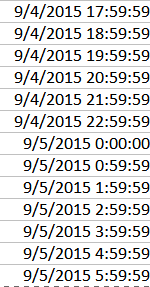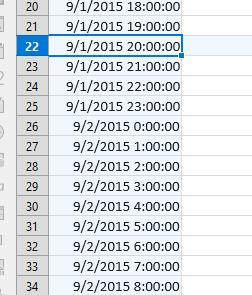Calc erroneously “rounds” the minutes in this case.
Casuistry:
-
Excel file created in “Numbers” (Mac)
Datetime column with the format: DD MMM YYYYY HH:MM (01/09/2015 22:00:00), where each field is a different time of the same day, the time is always in point. -
Same file, without modifying anything, opened in Libre Office Calc (Windows 10 locale es_ES):
The fields of the first day are displayed correctly, after 00:00, it starts displaying the hours incorrectly, for example: 00:59, 01:59, etc… -
Same file, without changing anything, opened in Google Drive: all fields are displayed correctly.
I have no idea why, but I think it is quite serious that, without showing any warning, when opening an Excel file in Calc, it shows data that are not.
Any ideas or suggestions?
Update: I’ve upgraded to version “LibreOffice_7.2.2_Win_x64.msi” but the alleged error persists.
example_data.xlsx (11.6 KB)





